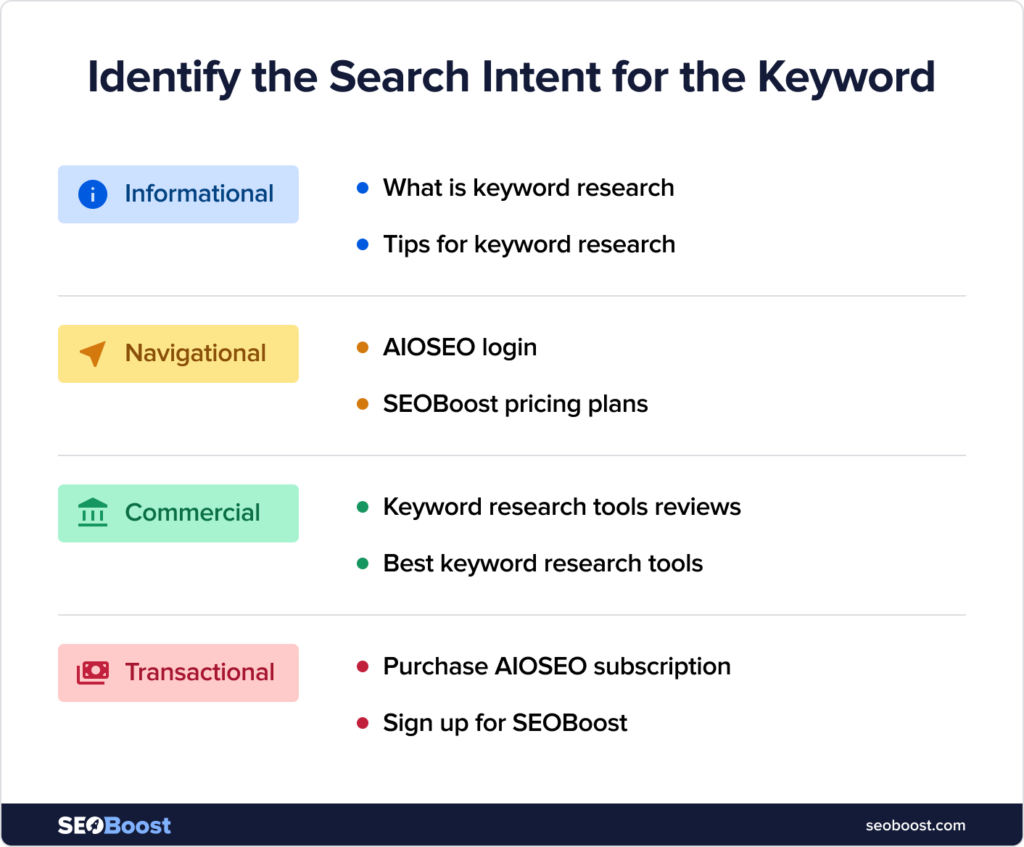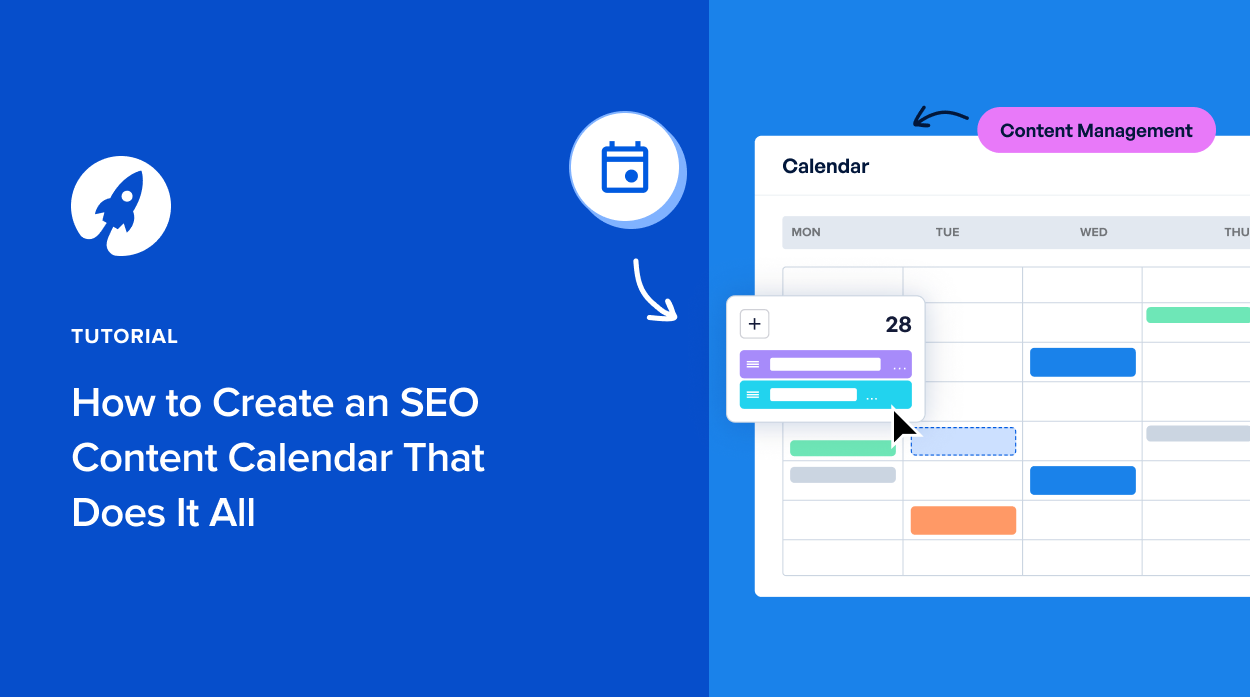Creating an SEO content calendar has been a game-changer for my content strategy.
Before having one, I was constantly scrambling to develop content ideas, chasing keywords without a clear strategy, and missing out on opportunities to rank. But once I implemented a solid SEO content calendar, everything changed.
Instead of guessing what to write next, I now have a clear roadmap guiding my content creation efforts. I can easily align my publishing schedule with SEO objectives, track my progress, and make data-driven adjustments to optimize my content for maximum impact.
And the best part?
SEOBoost streamlines the entire process, making it smoother, more efficient, and results-driven.
But let’s not get ahead of ourselves. Let me show you how to create an effective SEO content calendar that works.
What Is an SEO Content Calendar?
An SEO content calendar is a strategic planning tool that outlines what content you will publish, when, and why, all while keeping SEO goals and keywords front and center.
Unlike a traditional editorial calendar, an SEO content calendar is designed with search intent, keyword research, and performance metrics in mind.
Here’s how having an SEO content calendar helps you in day-to-day tasks and the long run:
Ensures Consistent Content Publication
Consistency is everything. Trust me.
By scheduling content in advance, you avoid random gaps in publishing and ensure your audience always has something new to engage with.
Plus, if your team has multiple writers, editors, and managers, it helps everyone stay aligned internally.
Aligns Content With Target Keywords and Audience Interests
Mapping out topics beforehand ensures you create content that aligns with high-value keywords and audience needs.
It also helps you spend time on keyword research and topic discovery that best captures search intent.
With the recent changes in search patterns and Google’s AI Overviews, this is especially relevant, as it allows you to plan your content more effectively.
Facilitates Tracking and Optimizing Content Performance
This is where I love using content tools like SEOBoost’s Content Management feature.
It allows you to track content performance, identify gaps, and adjust your strategy accordingly.
However, even apart from the tool itself, having an SEO content calendar is extremely important to keep the content cycle updated and functioning properly.
How to Create an SEO Content Calendar
Now that you know what a content calendar does and why it’s important to have one, let me walk you through the 6 steps I used to create one.
1. Set Clear and Measurable SEO Goals
Before you start planning what to write and when, it’s essential to define why you’re creating content in the first place.
Remember, SEO content that performs well always starts with a goal, not just a deadline.
Here’s how you can set clear goals for your strategy:
What Are You Trying to Achieve?
Start with the most important question first: What is the purpose of your calendar?
Your SEO content calendar should be built around specific, measurable goals. This could include goals like:
- Increase organic traffic by 25% in the next 3 months
- Rank in the top 3 for your primary service keywords
- Generate more inbound leads through evergreen blog content
- Boost engagement on educational posts through better CTAs
When you build calendars without setting goals, you end up with scattered blog topics and no way to measure success.
Align Content Goals With Business Objectives
Content is an engine that supports larger business priorities, such as product launches, seasonal campaigns, geographic expansions, or brand awareness.
Some examples for this include:
- Launching a new product? Schedule comparison guides and “best tools” listicles.
- Targeting a new audience? Add educational blogs tailored to their search behavior.
- Running a campaign? Create SEO content that supports and drives traffic to it.
Pro Tip: At SEOBoost, we set rocks (3-4 primary targets to achieve) for each team member so they can work on them and measure success accordingly. You can try out a similar strategy, too.
2. Conduct Comprehensive Keyword and Topic Research
Once your goals are in place, the next step is figuring out what your audience is searching for. This is where keyword and topic research becomes the foundation of your SEO content calendar.
Start by identifying broad themes related to your business or niche. Then drill down into specific topics and keywords that your audience is actively searching for.
Tools like SEOBoost’s Topic Reports become essential at this stage. I rely on them regularly to uncover keyword opportunities with SERP analysis, especially when planning content for a new month or quarter.
You can also complement your research using tools like:
- Semrush: For competitor keyword analysis and search volume trends.
- LowFruits: To help you find low-difficulty keywords for quick wins.
- Google Autocomplete: To surface long-tail phrases people are actively typing.
The key is to find a balance between search demand and topical relevance. Prioritize keywords that match your goals, align with your audience’s needs, and have a reasonable shot at ranking.
And don’t stop at keywords — identify related questions, subtopics, and search intent behind each term. These will help you structure better briefs and create content that answers real user queries.
3. Plan Content Around Search Intent
One of the most overlooked elements in SEO content planning is understanding why people search for specific terms. Search intent isn’t just a nice-to-have. It’s the difference between ranking on page one or getting buried.
There are four primary types of keyword intent:
- Informational: The user is looking to learn something (e.g., “how to create a content calendar”).
- Navigational: They want to find a specific site or page (e.g., “SEOBoost content brief feature”).
- Commercial: They’re comparing options before buying (e.g., “best free keyword research tools”).
- Transactional: They’re ready to make a purchase (e.g., “buy SEO optimization tool”).
Each piece of content should match one of these intents. For instance, if you’re targeting a commercial keyword, don’t write a long educational guide. Write a comparison post, showcase key differentiators, or offer a free trial to highlight your unique features.

When I’m planning the SEOBoost blog calendar, I use intent to guide both the content format and call-to-action (CTA). If it’s informational, the CTA might be to explore related blog posts. If it’s transactional, I’ll guide the reader toward trying SEOBoost or booking a demo.
Mapping content to search intent ensures every article, guide, or case study meets users where they are and nudges them closer to conversion.
4. Select Appropriate Content Formats
Not all content is created equal, and not every topic requires a blog post.
The format you choose should reflect both the search intent and your audience’s preferred method of consuming content. For example, informational topics often work best as educational content or how-to guides.
At the same time, commercial-intent keywords might be better served with comparison blogs, case studies, or even expert videos.
Here are a few content formats you can rotate through regularly:
- Blog posts: Ideal for educational and keyword-targeted content.
- Infographics: Great for visual storytelling and summarizing data-heavy topics.
- Videos: Perfect for product explainers, tutorials, or behind-the-scenes content.
- Case studies: Best for showcasing results and building trust.
- Landing pages: Effective for targeting high-intent transactional keywords.
Choosing the right format is also about distribution. Should this piece be shared on LinkedIn? Is it worth embedding in a newsletter? Thinking through where and how your content will be seen helps you create assets that do more than sit on your blog.
5. Establish a Consistent Publishing Schedule
Creating great content is only half the battle — publishing it consistently is what builds topical authority.
A solid publishing schedule ensures your team knows what’s going out and when. But it’s not just about frequency. It’s about maintaining a structure that search engines and readers alike can rely on. Whether that’s once a week or three times a month, consistency wins.
Start by asking yourself:
- How much content can your team realistically produce at high quality?
- Which days or times get the most traction from your audience?
- What gaps in your calendar need to be filled to support SEO goals?
This is where SEOBoost’s Content Management feature comes in. You can use it to plan and monitor content across the entire production cycle, from keyword research to draft, optimization, and publication.
The visual overview makes it easy to spot delays, track progress, and stay aligned with upcoming campaigns or product updates.
6. Monitor and Adjust Content Performance
Even the best-planned content calendar needs regular check-ins. SEO is a long game, and monitoring performance helps you make smarter moves, faster.
Start by tracking the right metrics:
- Organic traffic: Are your posts driving consistent visitors from search engines?
- Keyword rankings: How are your targeted keywords performing over time?
- User engagement: Are readers spending time on the page? Clicking internal links? Converting?
I usually track all of this with Google Search Console and then use SEOBoost’s Content Audit feature to make updates.
This feature highlights the underperforming aspects of existing content and suggests how to improve it, whether that’s reworking headers, refreshing keyword usage, or updating outdated info.
What I love most about this step is the performance-first mindset it builds. Instead of publishing and forgetting, you start treating every post like a living asset.
Remember, regular audits and content refreshes also help identify seasonal content that’s worth resurfacing or repurposing.
FAQs
What is an SEO content calendar?
An SEO content calendar is a planning tool designed to help marketers organize and schedule content creation to optimize search engine visibility.
How do I create a content calendar?
Start by setting goals, conducting keyword research, planning content around search intent, and using tools like SEOBoost to streamline the process.
What is an SEO content plan?
An SEO content plan outlines the strategy for creating and optimizing content to achieve specific SEO goals.
Final Thoughts
An SEO content calendar is a strategic framework for growth. It brings clarity to your content efforts, aligns SEO with business goals, and helps your team work smarter (not just harder).
From setting goals and conducting keyword research to tracking content performance and making real-time adjustments, every step contributes to a stronger search presence.
Personally, using SEOBoost has made this entire process more efficient. The Topic Reports help me find ideas that rank. The Content Management system keeps my workflow on track. The Content Audit feature ensures that every piece of content continues to deliver value long after it’s published.
Remember, whether you’re running a content team or creating posts solo, your SEO calendar should do more than list deadlines — it should drive results.




